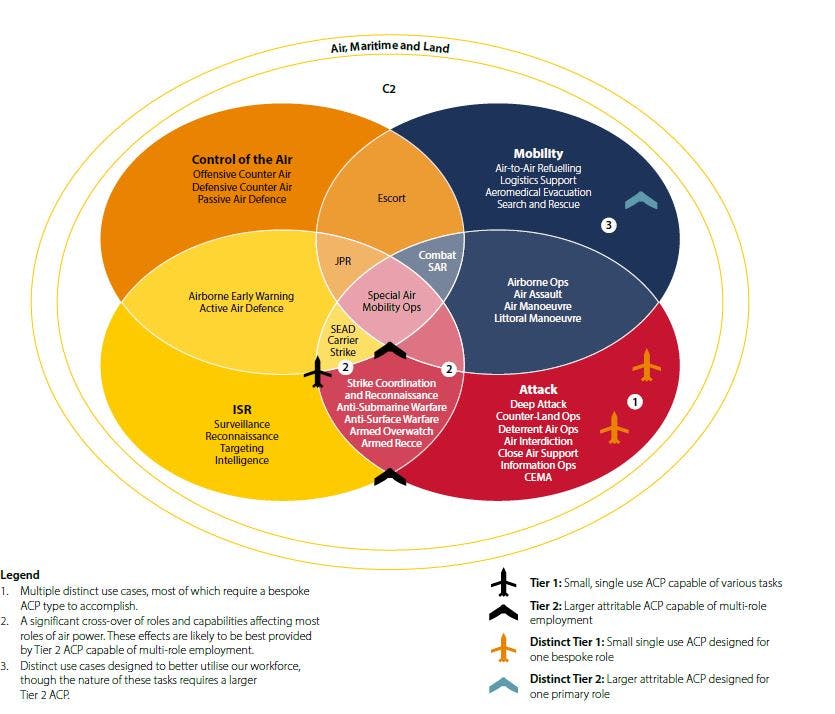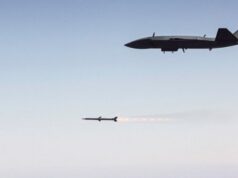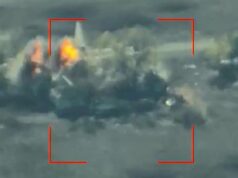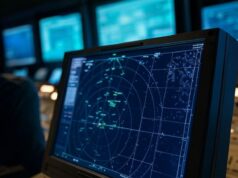The RAF’s 216 Squadron, initially formed for drone trials but lacking drones, is now set to transition into deploying new autonomous drones in 2025, with testing responsibilities shifting to 744 Naval Air Squadron.
The Ministry of Defence (MOD) has provided new insights into its evolving drone programme, addressing Parliamentary questions on the role of 216 Squadron and the future direction of drone operations in the Royal Air Force (RAF).
Danny Kruger, MP for East Wiltshire, asked about progress in the procurement of swarming drones for 216 Squadron and its intended role in operational testing and deployment.
Luke Pollard, the Parliamentary Under-Secretary for Defence, outlined a significant shift in responsibilities for drone trials, revealing that the role of testing and evaluation has been transferred to 744 Naval Air Squadron, which will now function as the Joint Uncrewed Air System Test and Evaluation Squadron.
In his response, Pollard explained, “216 Squadron was initially formed as a swarming drone trials squadron; however, the role of drone testing and evaluation will now be conducted by 744 Naval Air Squadron as the Joint Uncrewed Air System Test and Evaluation Squadron. 216 Squadron is intended to become the operational delivery squadron for an Autonomous Collaborative Platforms capability in 2025.”
This shift signifies a change in focus for 216 Squadron, moving from experimental trials to an operational role.
216 Squadron was established in 2020 with a focus on advancing swarming drone technology, reflecting a commitment to integrating autonomous systems into the RAF. However, this transition comes after challenges in executing planned trials.
Earlier this year, reports revealed that despite the squadron’s intended focus on swarming drones, it had not completed any formal trials due to “competing resource requirements.” Planned trials, including one involving the Callen-Lenz ‘Koios’ air vehicle and Blue Bear Systems Research’s ‘Centurion’ ground control system, were cancelled in 2023.
Despite these setbacks, the MOD remains committed to developing advanced unmanned aerial capabilities, with 216 Squadron now positioned as a key operational unit for the delivery of Autonomous Collaborative Platforms.
RAF looking at new ‘Autonomous Collaborative Platform’ drones
The RAF’s broader vision for its drone capabilities is outlined in its Autonomous Collaborative Platform (ACP) Strategy, which aims to incorporate these advanced systems into the force structure by 2030. The ACP concept involves uncrewed platforms with goal-based autonomy that can either operate independently or in conjunction with crewed aircraft like the Eurofighter Typhoon or F-35, even Tempest.
The strategy emphasises the importance of agility and technological advancement, stating that new drones will be developed with a focus on affordability and rapid adaptation to combat losses, making them effective in various mission roles while minimising risk to personnel.
BAE Systems, a major industry partner, envisions ACPs working closely with existing and next-generation aircraft, carrying out a range of roles from ISR to direct attack missions. These platforms are expected to act as “force multipliers,” enhancing the capabilities of traditional crewed aircraft through coordinated operations. The Defence Drone Strategy emphasises collaboration between the MOD, industry, and allies, aiming for a seamless integration of these platforms into the UK’s broader defence capabilities. This approach is seen as crucial in maintaining the RAF’s edge amid evolving global threats and technological advancements.
The transition of 216 Squadron’s focus from trials to operational deployment underlines the MOD’s strategic adjustment as it aims to balance resource constraints with the need to enhance air combat capabilities.
The shift to having 744 Naval Air Squadron handle testing responsibilities ensures a dedicated focus on evaluating and refining drone technology, while 216 Squadron prepares to bring the capabilities of ACPs into active service by 2025.
The RAF has already set the stage for a shift to air combat featuring advanced drones with the previous release of its ‘Autonomous Collaborative Platform Strategy’.
The document detailed a move towards an advanced fleet of combat drones.
The strategy states:
“Where appropriate, these platforms will team with other crewed and uncrewed AV across domains, add additional capacity to our current capability, and contribute to many key elements of the Air Operating Concept. By leveraging systems engineering advancements, new uncrewed aircraft can be dynamically developed, designed and produced in a manner that will make combat loss, whilst undesirable, acceptable.”
Looking towards a future just six years away, the RAF envisions a comprehensive integration of these platforms into its force structure. By 2030, ACPs are expected to become “an integral part of the RAF force structure, routinely operating in partnership with crewed platforms to deliver battle-winning military capability across multiple domains as part of a national or coalition force.”
The strategy recognises the significance of “technological advancements and operational risk tolerance” as the driving factors, committing to “continual experimentation and exacting QA ensuring that only the most effective capabilities are matured or kept in service.”
Three outcomes are pivotal to this strategy’s success. Firstly, it calls for the RAF to be equipped with state-of-the-art ACPs that align with the Defence’s strategic imperatives. Secondly, it demands the delivery of “organisational, operational and cultural changes required within the RAF to enable the disruptive effect of ACP.”
Lastly, it champions the creation of “an Industry and Government ecosystem to enable the rapid development, fielding and through-life support of innovative ACP capabilities.”
The strategy further elucidates the cross-domain roles ACP will fulfil, as “Figure 4 below uses the Air Power Model to identify where OA suggests ACP will best support air power roles in the future.” This integrated approach highlights the versatility of Tier 1 ACPs and the bespoke capabilities of Tier 2 ACPs across the spectrum of RAF operations.
Specifically, in the domains of Intelligence, Surveillance, Reconnaissance (ISR), and Attack, the strategy notes that “similar mission sets have been identified, and modular Tier 1 AVs could be readily adapted to the prevailing mission requirements.” Yet, it recognises that certain critical tasks will still require “a specialist, niche capability, potentially across both Tier 1 and Tier 2.”
The RAF said in a release:
“The Defence Drone Strategy provides the core reference baseline for the RAF ACP Portfolio ensuring coherence for the introduction of new developments in capability, supported by lessons learnt in our recent past and in current conflicts.
Advances in human-machine teaming, AI and other technologies mean that the world of uncrewed systems is rapidly advancing towards the use of autonomy. The war in Ukraine has also highlighted the rapid evolution of weapon systems and tactics. The ACP strategy sets out how the RAF intends to take advantage of this technology, working closely with the Royal Navy, British Army, across MoD, with industry, and our trusted partners and allies. This collaborative endeavour will pursue the best solutions for UK Defence, supported by UK industry, to find options with the correct cost-benefit analysis to augment our forces.
Using emerging technologies, ACP will undertake critical roles that complement and enhance the operational effects achieved by our current and future crewed aircraft, acting as a force multiplier. Implementation of this strategy will reduce risks to personnel and provide us with the opportunity and means to learn, develop and fight faster than our adversaries, whilst maintaining a keen eye on the legal and ethical considerations.”














Lots of complicated charts and likely overly expensive and complicated projects as usual
But what concrete designs do they have? Will it be the 59 Indago and 106 Stalker etc
What’s actually been confirmed…
Surely not. They are TUAS for use by the army for surveillance, not autonomous attack Drones.
I have no idea on the what, and the how many.
Haven’t we heard all of this before? What UCAVs are being developed in the UK? Mosquito was cancelled without replacement. Vixen never got started.
The magical 2030 jam yet again 🙄
If we couldn’t afford to give them any drones to test, how we going to give them anything to fly operationally?
But still no actual drones…..
Maybe an OTS purchase of something is incoming? 2025 is not far away.
You’d like to think so, they must have informed all possible future decisions by now. That just read like buzzword gobbledygook, as it doesn’t actually specify what type or how many drones will be deployed or when.
Like you, that is what we always want to know.
How many.
When?
How?
How much?
Hopefully our long running “informing decisions” gag is nearing a close?
Hopefully something that actually meets the criteria of being ” more agile, more lethal.”..etc .
That chart if printed out would make a glorious paper aeroplane and it only needs to be 2D printed so a substantial money saver too.
Ghost Bat has an in service schedule date of 2025 for RAAF. While the airframe is Boeing, the autonomous stuff is BAE. A possibility?
I think if that was suddenly announced most here would be delighted.
I know I would.
Thank you for confirming that, Read a good while back that it’s autonomous systems were from Bae but when Ghost Bat was last talked about on here in the same breath as the non development of Taranis, Mantis et al, I wanted to mention that to show it still had life, but was unable to find any reference to it whatsoever and indeed was doubting my original evidence to that effect. If it is true they seem to be keeping it very quiet. Do you have a reference for it?
Spy, this is direct from BAE website, but there are others out there.
https://www.baesystems.com/en-aus/what-we-do/autonomy
I have seen more detail from BAE officials elsewhere – I will see if I can find better links.
In the link I provided, have a read through the “Explore Strix” details, Taranis & Mantis gets a mention, as does Ghost Bat. The Strix section well worth a read in its own right. Also makes mention of work on the T-650 with Malloy.
Link? Sorry I don’t see one.
Sorry, it seems posts with links go automatically to moderator (I assume in case it’s to a problem site). Should turn up eventually.
Try googling for “BAE Systems Advancing Autonomy in Australia”.
It’s a BAE website.
Ok. Thanks.
Boeing is in the process of building a production facility for Ghost Bat in Australia which won’t be completed until 2027, if everything goes right. Interesting that Ghost Bat was not selected by the USAF to proceed to the next round of its Collaborative Combat Aircraft program. General Atomics and Anduril were.
Ghost Bat is currently built elsewhere in Australia in a smaller facility. This is the mass production setup they are building. There is something like 5-6 completed block 1, another couple finishing off & 3 block 2 recently started.
Yes, USAF got 1 to trial, but decided to go with 2 other designs in their down selection. However USN is running a seperate competition that is still ongoing (& remember that Boeing graphic with a landing hook). There are currently USN personnel at Woomera learning to fly Ghost Bat, according to a journalist article on the subject. One advantage Boeing has here is they already build naval fighters & drones & they understand carrier operations.
See:-
1. Monty Python’s Life of Brian – Scene 21, The Committee Meeting
2. Parkinson’s Law of Triviality
That’s the whole point. Talk is cheap, so is testing. The navy are further down the road in all this as they have a greater threat leveled against them as they sail the seas.
In fact I think the RN will be first into the ring because the F35’s are short on range for maritime work and there wont be any refueling of Naval aircraft any time soon. In other words they will be out there on their own unless a friendly carrier from the USN or French Navy is working with them or they are within land a/c cover.
Now we do have still have some vitally useful bases on various islands including: delete, delete, delete, when Lammy gets going. BTW I expect he sees the Defence budget paying for slavery reparations. Yawn!
I would really like to believe we are getting somewhere but it’s been years of exploratory, tests, projects, whatever, across the board and we still don’t have anything new. So the question in this case is which drone and when will it be operational.
I’d like to see the Sea Hornet scaled down using modern materials and redesigned for autonomous work. I’m sure it would cruise at 375kn and could have a great endurance/performance. Could even go green.
Sea Hornet? I know of the de Havilland one but beyond that….
A clear bid by the RAF to get their ACP aspirations put seriously in to the mix for SDR 2025! Maybe it will finally be given a higher priority than all those other “competing priorities”. Note the “Air, Maritime and Land” caption on the diagram. A maritime basing platform (i.e. a ship!) would certainly make a lot sense – the QEC is an obvious candidate but too scarce, expensive and important for most taskings.
The ideal option would be the RN (or perhaps the RFA these days) getting a few smaller and cheaper dedicated “drone carriers” capable of operating both air and maritime unmanned platforms. There was early speculation that the T32 programme might go that route, until opinion swung towards prioritising an increase in the number of conventional frigates. Given the events in Ukraine – and the building of dedicated drone carriers by China and Iran – if the T32 programme proceeds, maybe the SDR will specifically recommend that it is as a drone carrier and mothership after all.
Meanwhile, France continues developing the nEUROn program for FCAS and Rafel, which is combined with the Taranis program that was partly with the UK taxpayers’ money, yet, we still have no idea what happened with the follow-on from the Taranis demostrator. Maybe one of you guys can provide information about the UK Government’s plans for the demonstrator, or they pissed £140 million up the wall. All I can find is that it will be ready for 2030.
To my mind, spear3 is a swarming drone. They “network” apparently and a bunch of them can be told how to attack a target…ie. arrival time, route, direction. They are also significantly miles quicker than drone of the non,-jet variety and with the EW version, must provide a percentage success rate far above that which would be achieved by prop versions unless launched in significant numbers, but do the MOD ever do big numbers? ( obv 2030 is a great mod number) we should order some before the design is 20 years old.
I read the first paragraph expecting to find some gem of reality in the next 10 minutes reading to find no concrete numbers or types of drone. But what did I expect?
The twin-engine Banshee would appear to be a good basic vehicle to modify for trials, available at an aircraft carrier near you and a mature working design, AND by all accounts moderately stealthy, but?
Before anyone asks…but what would you do exactly with a modified Banshee, and what modifications would you make..well that IS a good question for drones in general and one which no light has been shon on, or rather, a million lights have been shon on these things but nothing has been illuminated (they are obviously very agile)
AA
We have with Spear EW a lightweight jamming and decoy device, using Leonardo’s Britecloud.
I imagine if that or a slightly scaled up version were used from a Banshee you would be able to use it for more low-level, tactical stuff (taking out Pantsir rather than S400) because the thing is recoverable and so you get it back in the event of no mission being found.
Otherwise you have the obvious kamikaze strike weapon and also the ISR/ Targeting pod role, for low level entry and risky attacks.
Plan? UK governments? Not trying to put the two together are you Coll? 🙄
Just another attempt to claim a capability with few, if any actual platforms. It also could be the prop to cutting the actual number of F35’s or even Typhoons with argument that we don’t need as many with the promise of a fleet of still to be identified drones. But it sounds good to the uninitiated and great in Parliament – by the time anything real appears it will be over budget, late and ineffective as the rest of the world has moved on. How much is all this costing ?
Paper squadron?
A paper plane is more realistic for the MOD at the moment. And a paper plane is still technically unmanned.
216 sqn was reformed in 2020
Interesting that 744 NAS is picking up the ball as regards testing, going forward. Perhaps tying in handily with “Project Ark Royal” – adding strike/combat mass to our carrier ops via UCAVs, etc. The medium term goal there, of course, being to get lower-power (and doubtless cheaper) EMALS fitted, in order to launch and recover the larger stuff, perhaps even on the scale of the MQ-25.
All hinges on the Security Review of course.
Where did 744 NAS come from? Has it yet formed and if so will it replace/augment the existing 700X NAS at RNAS Culdrose?
Lots of gobbledegook to give the impresion of advanced capabilities, but projects being cancelled/cut after filling someone’s bulging pockets. We need capabilities with depth & numbers. I somehow doubt the Chinese, Iranians etc have this problem much. They churn out lots of units of harm for all our enemies to use against us.
I just hope whatever we deliver works well, isn’t easily countered or even hacked & turned against us.
When I saw the headline I thought we were close to Loyal Wingman drones to accompany our Eurofighter/Lightning/Tempest squadrons.